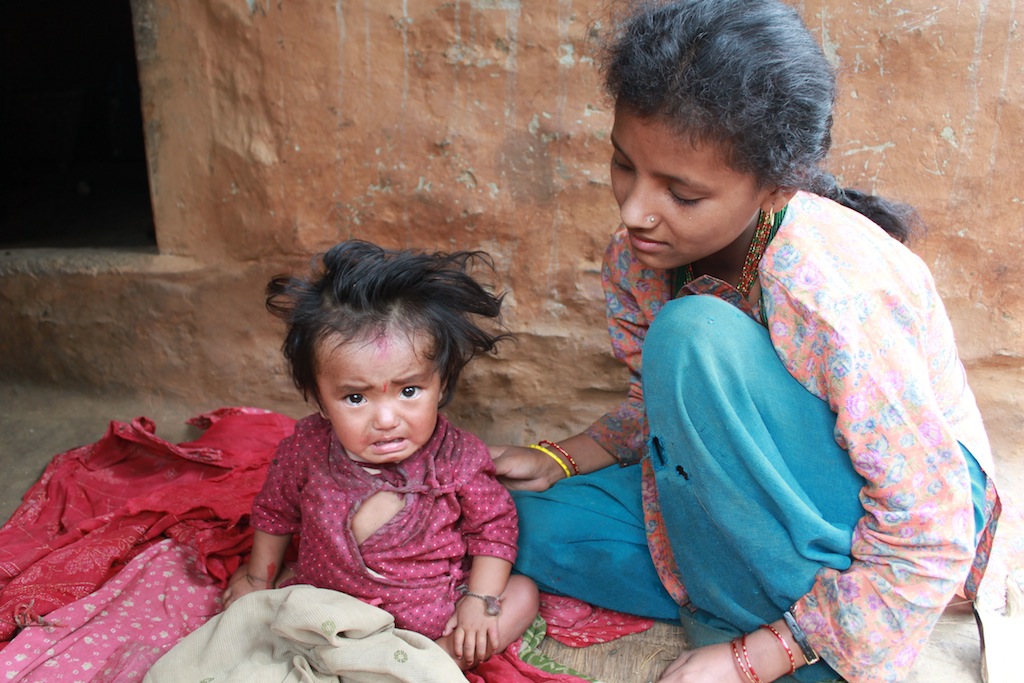
Pulitzer Center grantee Hanna Ingber Win and I arrived in Nepal last week. We are here to report on early marriage and its effects on maternal health. Neither of us have been to the country before. So when our hosts at SOLID Nepal (Society for Local Integrated Development Nepal) asked what we would like to eat for lunch before departing for the Mountain District, we replied by asking what dishes they enjoyed. Of the suggestions offered, we selected chow mein.
We climbed up the stairs to the top floor of their office building. There was a nice breeze and two heaping plates of chow mein were sitting on a table. "Would you like any?" we asked Latshering, our host. "No, no" he laughs, "Dr. Khem won't let us have junk food here." OK, so maybe not a traditional dish! Maybe more like our McDonald's. Latshering Glan Tamang is the media monitor at SOLID Nepal.
After we finished the now less exciting chow mein, we washed up and packed the truck, settling ourselves in for a four to five hour ride. I was thankful for the air conditioning in the truck. The midday traffic is overwhelming. Motorbikes weave skillfully through rickshaws, cars, buses and trucks. Nepali folk music was playing—pleasant and cheerful, creating a slight contrast against the jarring honks and screeching brakes of Kathmandu's traffic. Motorcyclists tend to wear masks to protect themselves from the dense air pollution in the city. People are supposed to drive on the left side of the road, but mostly people go wherever there is space. Every now and then, vehicles veer unexpectedly to the side to dodge a cow in the road.
We picked up Atul Mishra, a senior editor and health reporter for Kantipur Publications, with whom we discussed demographics. The population of Nepal is about 29 million, with approximately one million living in Kathmandu. This small country hosts eight official languages (as of 2001), but Atul tells us that there are as many as eighty different languages spoken here. The major religions are Hinduism and Buddhism. We were driving 120km to the Dolakha District—a short distance, about seventy-five miles, but it took us around four hours to get there due to road conditions and geography. From there we will be climbing into the mountains to reach more remote villages where child marriage is still practiced.
Breathing was easier as we left Kathmandu. The roads became less populated and there is more lush vegetation. Clouds and fog settled between mountains, blocking a view of the peaks, so it is hard to say how far up they reach. Rice and maize were planted in step farming along the mountainsides and houses, coated in red mud, stood out against the greenery. I started to get nervous because at times we were driving at 80km/h on winding roads and I had no seatbelt. Then I saw a young man, on top of a moving bus, fasten some bags to the roof and then slide back into the bus through an open window. Behind the bus was a woman sitting sidesaddle on the back of a motorbike—with no helmet. Did I mention that it's monsoon season and the roads are wet?
The road narrowed and was riddled with potholes filled with water. Every now and then we would run into a truck going the opposite way. So our driver would stop, back up on a narrow, switchback mountain road, to let the truck pass. It doesn't seem physically possible to fit two cars on these roads, but somehow it happens.
The mountains were breathtaking. We were so high up—the Kathmandu valley was no longer in sight. We stopped on the road for some delicious chai tea and boiled potatoes. We took a few pictures, although it was hard to see much of anything due to the fog. We reached Dolakha around seven that evening and prepared for a three-hour trek into a mountain village where we would begin interviews.



